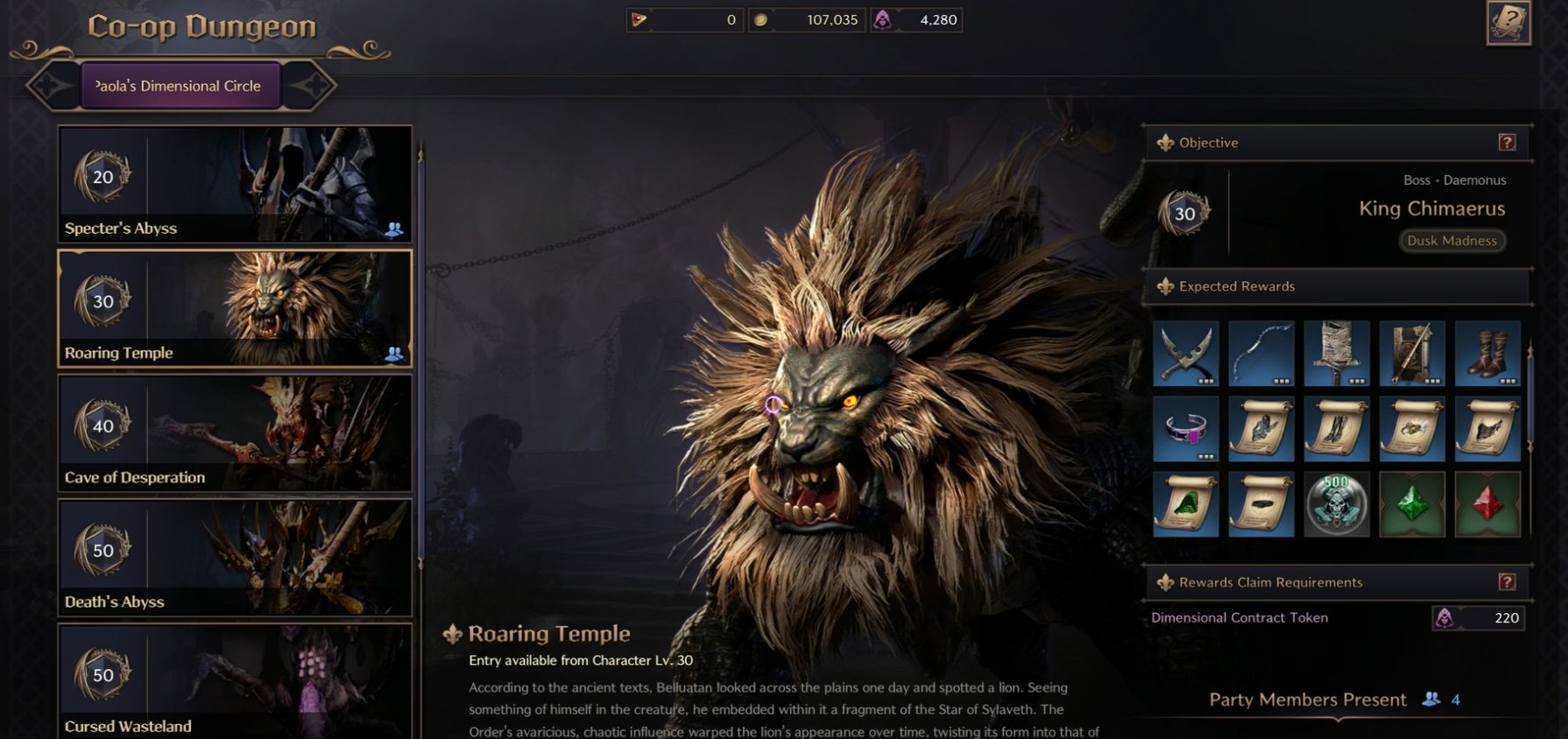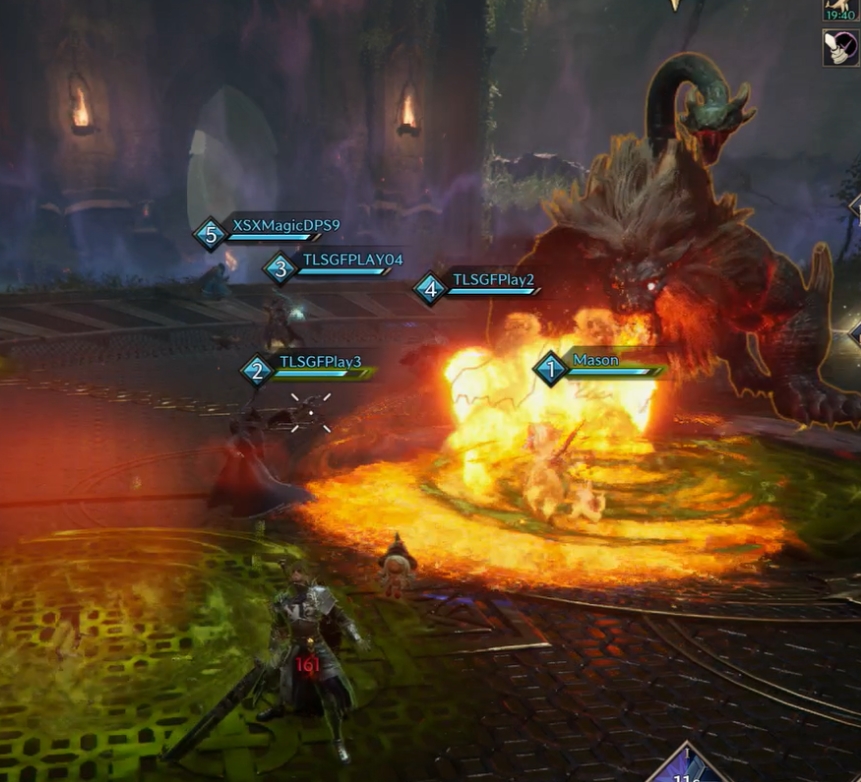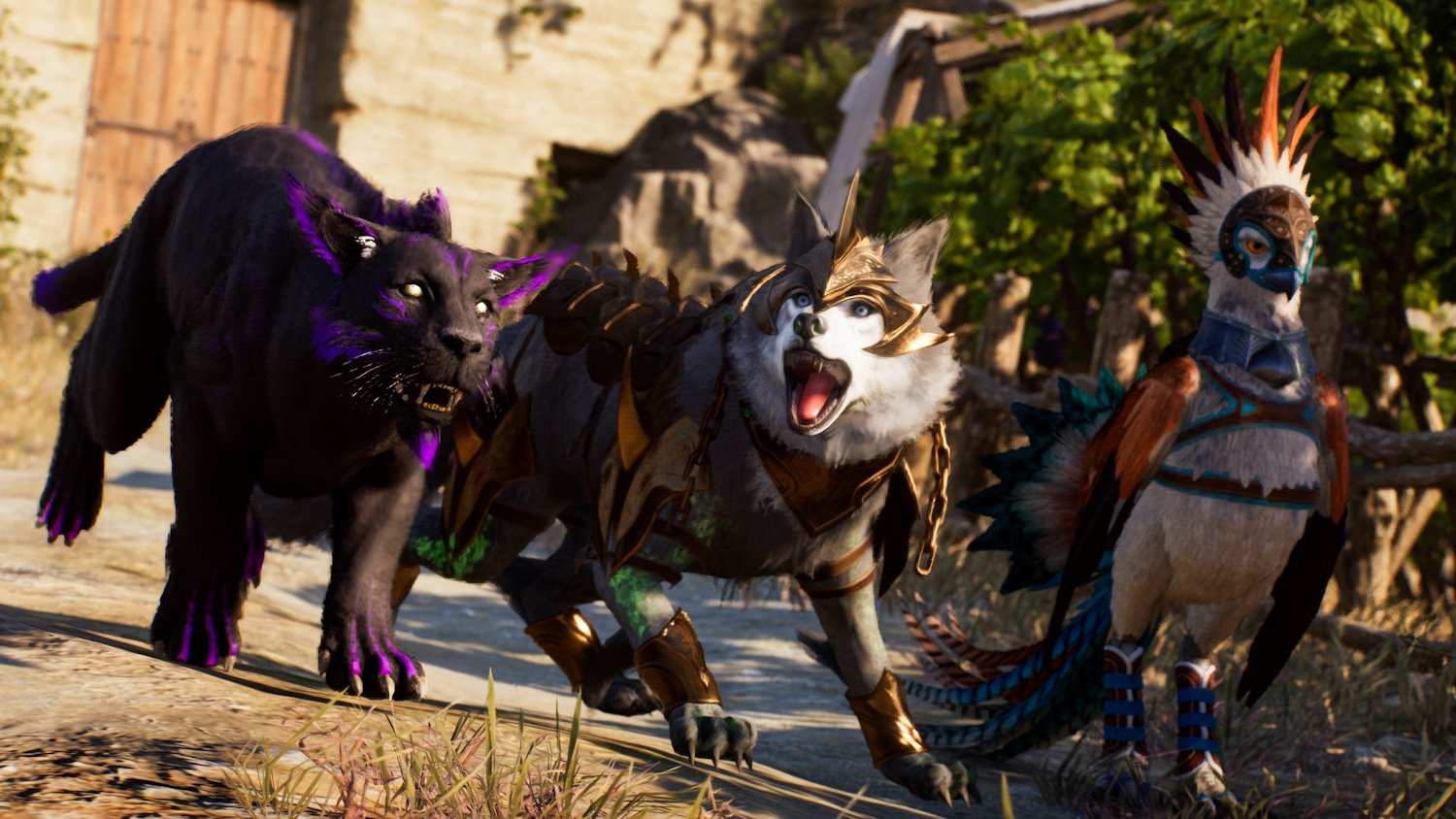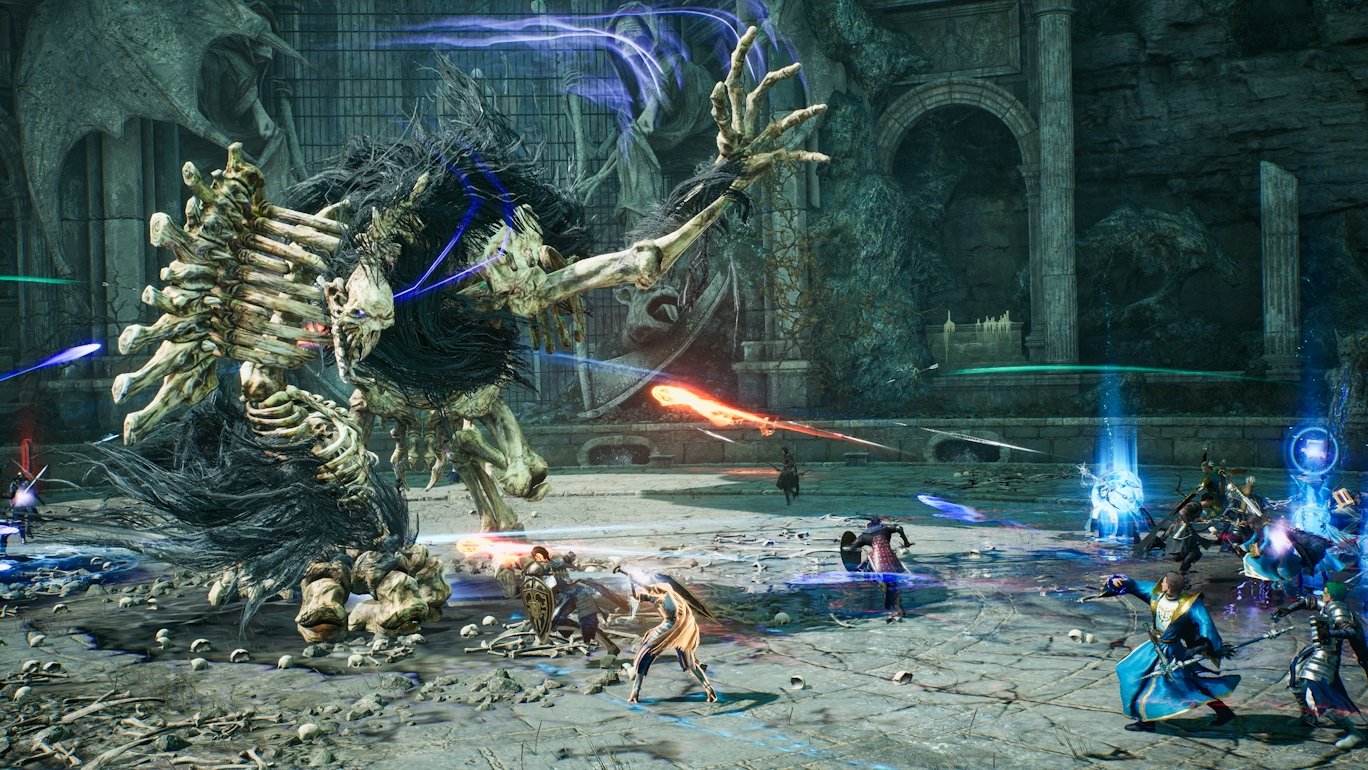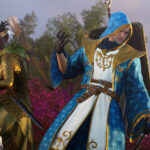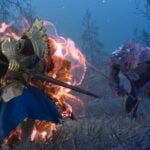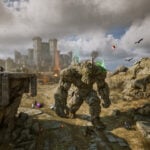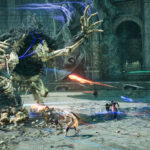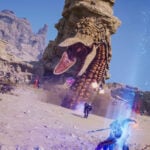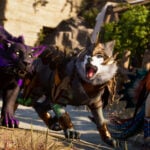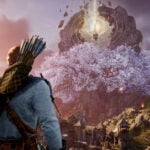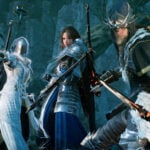
Most of the games I played at Summer Game Fest were more enjoyable than I expected – including Throne and Liberty, which was probably the one I originally dreaded the most. The development of this game has gone on so long that it’s very little like the Lineage franchise title originally announced back in 2011. However, of the core MMOs I saw at SGF, Throne and Liberty was certainly the best. Amazon and NCsoft brought a multiplayer demo that actually required teamwork and felt like a good fusion of what I expect from an MMO – but with enough bells and whistles that it didn’t feel dated.
And that’s all very fortunate as in conjunction with today’s embargo lift on press, NCsoft has announced that the game is finally (finally!) launching globally on September 17th as a free-to-play MMORPG on PC, PlayStation 5, and Xbox Series X|S. An open beta for the Americas, Europe, Oceania, and Japan is also en route July 18th through 23rd.
The MMO meat
Now, before anyone gets too excited, no, I can’t say this is the next genre-defining MMO. I didn’t nearly see enough of the game to get that impression, so while it’s possible, there’s just too much going on with the game to really demo properly, which is true of any MMO. That’s why I respect that the team at least brought over something to show off that was not only very specific but explicitly focused on one of the multiplayer aspects of the game. Alone together is fine, don’t get me wrong, but that’s not why I got into this genre, and I don’t think it will ever define it.
So let’s start off with how the multiplayer demo went. Our group of six was evenly split between PC and console (Xbox series X|S) to tackle one of the game’s dungeons, a level 30 dungeon called Roaring Thunder. Prior to SGF, Amazon’s PR had me select my role, so I went melee tank, which used Great Sword plus Sword and Shield. I ended up playing on console, again. While the Xbox controller is not my favorite, I found I used it more than any other input style the whole weekend of demos. I never felt truly comfortable with the controller, but the Throne and Liberty controls were quite memorable.

Much as true in New World’s Aeternum, the idea is that you switch between the two different weapon types. Aeternum also asks you to actively dodge and block more, but Throne and Liberty is a bit more traditional, while T&L is a bit of a mix between old-school tab targeting style (you have a focus) and more action-oriented controls.
You have active parrying (and “perfect parry” if you time it right), “dodging” is more “don’t stand in fire,” or “run away from the purple flashing thing before it explodes,” and you can avoid line-of-sight attacks. You can even throw yourself in front of certain attacks to take a hit for someone, such as with one boss that shot fire at a randomly trapped party member while the tank stood in front absorbing the flames. It really felt like the best of both worlds.
While Aeternum gives each weapon type three active use buttons, T&L grants four, so you end up with two more unique attacks. It’s not the old-school three-hotbars-with-10-moves-plus-potions we cut our teeth on, but the cooldowns are short enough that you’re almost constantly using them on both weapon types. Even though I didn’t have time to read a single move description, I could tell chains meant pull, an aggressive looking arrow meant charge, a thrusting shield was a shield bash, etc. If you’ve played an MMO before, T&L is very intuitive.

I won’t say trash mobs are anything super exciting outside of giving you opportunity to use your moves, as you’d expect in most MMOs. The boss fights reminded me a bit more of FFXIV in that even though there were two tanks, battles didn’t feel like an extended tank-and-spank. Maybe this is because our leader effortlessly tanked, but I’m not sure. For example, one fight had us moving the boss towards some water so we could dose ourselves when set on fire, but I believe the boss followed us on its path there.
One of the more complex bosses had a few gimmicks. If it jumped into the middle, there were multiple lines to pull to dose the boss in water to prevent it from powering up. We used grappling hooks to do this, which felt fine. Grappling does feel a little floaty, but I think that’s partially to help players go from grappling into gliding, which is possible and was even recommended for this battle.
Then the boss also had a kind of stun attack used on a random player before spitting fire at them. Our guide noted it was a high-damage attack and that he’d simply stand between the boss and its target so he could tank the damage. Tanking normally feels pretty thankless, but this sort of mechanic make the tank look as if he was really taking one for the team, but for me as the target, I felt as if I was really being saved. It’s not entirely fresh since it’s the basic premise of tanking, but making it a bit more in-your-face helps you appreciate the tank role more, especially because it’s much more visual than just “the tank is in the front with a lot of flying numbers.”
Killing stuff in dungeons was typical for MMOs, but the path down was pretty interesting too. At one point, we had to adjust the water level a bit and use our swim morphs (basically the character as a mount), and in another, we had to glide down a hallway filled with fire pillar traps, trying to avoid getting roasted. It’s a small thing, but much more interesting than simply reskinned walls and mobs as you often experience in other MMOs. I might expect this kind of thing in an old-school raid, but rarely in a regular dungeon.

Overall, our group successfully cleared the content. Nothing felt too challenging, though I did end up dying once and had to run back, but there are “save points” you get as you progress through the dungeon to help with that. Health and mana regens are slow, making battles meaningful, but access to campfires that restore your stats make downtime minimal while still giving a bit of an old-school feel.
Again, nothing in the content mechanics was revolutionary, but it was above average in terms of expectations and really good considering it was an MMO demo pushing multiplayer. If nothing else, Amazon and NCsoft knew how to demo an MMORPG, and that’s an uncommon skill in my long experience at game conventions.
Extra toppings
MMOs aren’t just combat to me, though. We talk about immersion and living worlds, and while those are hard to peg down in a demo, there were some neat little flourishes I enjoyed.
First, character creation. You have a lot of options to make yourself pretty, and can pay for a whole remake later (including name changes). I was in a hurry, so I didn’t see particularly broad weight or height sliders, but I did end up making a character that kind of looked like Jack Sparrow as a viking with the randomize option, and that was neat to stumble on.
A big non-combat feature I enjoyed was the mount alternatives: morphs. Essentially, all T&L players are World of Warcraft druids in that you turn into your mount instead of riding one. The twist, though, is that it kind of kicks in under the right conditions: go into water and become the water mount, jump off a high ledge and double jump, then turn into your glide mount. The mount/morphs also level up, much like your “mount license” mechanic in other MMOs.
For the gliding morphs, you can go up and down, but I barely had a chance to play with that aside from the fire-pillar challenge I noted above. To note, different morphs can have different abilities, like one swimming morph having an ability where you don’t take damage from swimming in lava. I didn’t see a fireproof bird, but my swan/goose morph probably would have been delicious if it were edible.
Admittedly, one of the land-based morphs gave minor chocobo vibes, so FFXIV players may be slightly tempted. There was also an orange with a face as a regular land mount, so you’ve got quite a range of morph options, from cute to cool to just weird.
There are also “Amitois” which are a kind of like a customizable pet that can give you stats, help with recovery, or activate “convenience” features. We didn’t talk about this much though due to the time limit, and while it was cute, I was never really directed on using it during my demo. I never noticed is during combat, so it seemed fine to ignore it if you’re not a pet person, but obviously that could change.
Dessert chat
After getting some hands-on time with the game, I was able to talk to Franchise Lead Merv Lee Kwai and Globalization Design Manager Daniel Lafuente, both from Amazon Games. The Amazon devs joined the publishing of the game long after the the move from Lineage to the Throne & Liberty, but the switchover was part of NCsoft trying to find its core audience – an explicitly global one, hence the move away from Lineage and the Amazon partnership.
Despite my interest, I was told the game’s Lineage history does come up a bit behind the scenes, but not as much as people may imagine. Though the game has Lineage franchise “bones,” the need for relevance to modern audiences prompted NCsoft to focus on “iterating and interpreting” past development.
For example, combat was more like original, stationary Lineage combat. For big group battles, it’s better to have less player movements (especially in terms of processing), but in a small group or isolation, modern-day expectations undermine that large-scale tuning, so the team slowly increased the movement freedom of abilities. It was important to do this slowly, especially since NCsoft was still trying to respect the Lineage fandom. According to the devs, this move has led to more positive feedback from global audiences and ideally a better product in spite of the wait.

I may not have learned a ton about the game’s early dev, but I did learn that the studios don’t think of the Korean launch as a soft launch for the game as a whole – just as a regional variant. As readers likely know, the Korean launch last year was messy and concerned even investors, so the team has been adjusting features like conquest and siege balancing. Kwai in particular stressed that they are relying on player feedback, so how they interact with it in both live and testing affects design, though the Korean version of the game and the global version aren’t necessarily getting the same changes. (In fact, Kwai says he’d like to see even more regional variants of the game in the future.)
With this in mind, I asked the devs what a successful global launch of the game will look like. For Lafuente, a successful launch would mean having happy players who join and invite friends to play with them. That may seem like a low bar, but as someone who actively avoids inviting friends to the game they play the most due to poor dev/community relations, I respect this answer. Similarly, Kwai says that success would mean having players who trust devs and give them feedback because there’s nothing worse than players being so done with a game that they don’t even complain but just walk away.
For example, as Throne & Liberty still has some Lineage bones, gamers may expect hardcore grinding – something modern audiences tend to shy away from. The studios have tried to find a a sweet spot between dragging out the grind and creating a sense of accomplishment. Grinding used to be rougher in previous builds, but slow changes have eased that, especially in terms of leveling pacing, thanks to player feedback. Still, the Amazon devs reminded me that they’re not just here to lessen the grind. For them, it’s about trying to shift away from raw grinding and toward setting meaning tasks that actually contribute to gameplay.
Naturally, I also had to ask about hacks and bots, which the teams say they are actively addressing, based on both betas and the live Korean game. The eternal problem – one MMO players know well – is that as devs catch cheaters, the cheaters always find an alternate route. Both studios say they take it seriously too, so core devs at NCsoft (digging into the game code to isolate abuse) and Amazon (identifying and punishing cheaters) will work together as a united front. The devs say they’re using all their past game experience for T&L, plus they’re analyzing the Korean game to help prepare for the global launch, anticipate problems, and look at how bots may play to nip that in the bud.
That being said, it’s still a free-to-play game, so there will be bots, so the studios must confront not just the fact that they exist but what they are doing and how addressing bot issues will impact normal players – especially the economy. Going after bots means changing the way the game is played, and that can be “to the detriment of normal players,” according to Kwai. It’s hard to reveal any specifics without inspiring cheaters, but what he did share is that the way bots play is different from players, and while the bots may “evolve” to be more “human-like,” the devs still have ways of determining who’s human and who (probably) isn’t.
The game may not be out yet, but the slow development time (and reception in Korea) surely worries Western players, especially for an MMO expected to update and evolve. I was told that the content update schedule is still in the works, but future content is being worked on already, as Amazon wants to pace updates with the playerbase so we don’t feel an artificial pinch to put in more hours to access new stuff. According to Amazon, NCsoft is fast at pumping out builds and changes, “very buttoned up, professional,” having content ready in months or even weeks after chats. We’ll see how this all plays once the game finally comes out September 17th, 2024.

